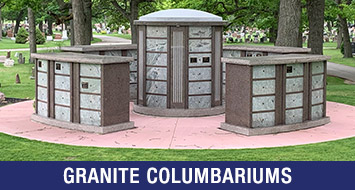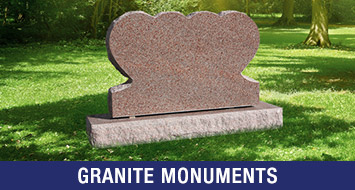Scrap the RFP Process
A few months ago, the publication Municipal World published an article by John Lewis, President and Founder of Intelligent Futures, titled “Why RFPs often suck – and 8 ways to make them better.” He explains that so often, RFPs sent out by municipalities are extremely vague in scope, expectations and budget requirements surrounding the project and extremely detailed in legal jargon, often two or three times the number of pages than the project itself. This often leads to drastic differences in proposals submitted for the project – which benefits neither the people making the decisions nor the suppliers who spend a great deal of time putting the proposal together.
We couldn’t agree more with the issues he outlined and the example he uses is a common occurrence among suppliers. He goes on to list eight ways a municipality can make the RFP process better. We say get rid of it altogether…
Now that you’ve gasped and said “it can’t be done” or “we have to go through RFP, it’s in our bylaws and we’ve always done our purchasing that way”, let me explain.
A municipal government is a complex organization that coordinates and distributes a vast array of services for the community in an abundance of different areas: all encompassing infrastructure from roads and sewers to rec complexes and scenic parks; social services for children and seniors, low-income services, policing, cemeteries, transportation and the list goes on. Officials, both elected and non-elected, are expected to know best and be experts in all areas so they can make the right decisions for their community.
We all know that is quite impossible and that so much of that required knowledge comes from experience over time. Yet, they are expected to be informed enough in all areas to know who the right supplier is to provide what they should know to be the right product or the right service to get the results the community wants and needs.
So that official, usually non-elected, sits down and compiles an RFP outlining what they think they need to purchase or request a service they think will best give them the result they need. Then, in a very lengthy summary, state that should the RFP submissions not fit the criteria in the RFP, they can be disqualified, regardless if the RFP itself is missing vital information or misses the goal of the project altogether.
These types of RFPs can lead to very uninformed decisions, poor purchases and budget overages. Many quality suppliers will opt to skip an RFP if they feel it doesn’t meet their standards on the product or the service requested and some have even decided to avoid the RFP process altogether and are much more successful selling direct.
As frustrating as it gets
In 2018, our company put together an RFP submission for a municipality in Canada, who outlined a very specific columbarium design. They didn’t share their budget and chose to specify foreign granite over domestic granite. As is often the case in columbarium RFPs, each supplier submitted a few different options; always one that outlines what the customer asks for and then what we think they should go with. We did just that and submitted a quote on the unit they wanted as well as a unit with the same niche configuration but a standard shape to save on costs.
We were ultimately awarded the project but that is where the trouble began. When they sent us the contract, they revealed that all submissions had actually come in over their expected budget (which they didn’t share) so after much back and forth, it boiled down to them asking for the unit they wanted (because they liked the way it looked) but for the price of the standard unit. We explained to them the additional cost in stone and manufacturing for the unit they did want and stood our ground on price. When they realized they didn’t have the budget, instead of going with the practical standard model and be within budget for a project they already awarded, they cancelled the project.
In early 2019, the municipality released a second RFP, with basically the same information as the first one. Unfortunately, because they had technically awarded the project a year earlier, they had publicly released the quotes submitted at that time. So, while we stood by the original price, a competitor underbid our original quote from the first RFP and was awarded the contract.
Not only did we lose out on the actual project, we invested heavily into getting two RFP submissions together and lost even more faith in the RFP process. The municipality also probably spent the difference in price on the two units putting the RFP out the second time.
While the scenario seems exceptional, it is quite common for RFPs to be cancelled because often, the municipality only begins to fully understand what they are getting into when they start going through the submissions.
Here’s how we believe municipalities should change their purchasing process:
Step #1: Eliminate the RFP process – at some point, it was written in the by-laws to utilize an agreed-upon RFP process so the same can be done to remove the process from your by-laws
Step #2: Do the research – municipalities have an incredible amount of resources available to them. Apart from simply googling suppliers, most municipalities belong to associations that hold annual conferences with supplier tradeshows. These are great events to meet suppliers for everything from public works to cemeteries. You can also call neighbouring communities who have already purchased the product or service you are looking into and inform yourself as much as possible.
Step #3: Contact the suppliers – suppliers are the experts and your greatest resource. Explain the project to them and outline your budget and expectations. Allow them to give their opinion on the product or service they think would best suit your project and budget. You can learn a lot from those conversations, from “you really don’t need something that big, expansive or costly” to “your budget won’t be enough to fulfil your expectations.”
Step #4: Research the suppliers – we often see outside contractors bidding on products that they don’t supply or know very little about, with the intention of subcontracting or purchasing from a third party. Be sure to research the supplier and find out if they are a reputable company in the industry and experienced in the product or service you are looking for. If they aren’t knowledgeable in the field, then they can’t possibly give you the best information so you can make an informed decision.
Step #5: Get references and make sure to contact them – just because a supplier has done many different jobs doesn’t mean they have many happy customers. Many customers may have experienced a positive buying process but are unhappy with the follow up service. Make sure to get as much information from the references as possible.
Step #6: Get a quote – just because we don’t like the RFP process, doesn’t mean you shouldn’t shop around. Simply ask the supplier to provide a quote based on your conversation and what they think would be the best fit for the project and the budget. Many suppliers charge more for a job spec’d in an RFP than they would in a simple quote.
Even if the municipality decides that the RFP process must remain in place, completing steps #2-5 before writing an RFP is so important. Your RFP will be much more informed and much clearer to the suppliers. Just make sure when you are speaking to the suppliers, you are upfront about the project going to RFP and prepare for an increase in any price given as a quote before the RFP is released.
Making the right decision for your community, however big or small, is all about getting the right information and the right tools to make an informed decision. Doing the research, contacting the experts and communicating with their references is a vital part of the decision-making process. Know what you’re buying and know who you are buying it from. It can help save your municipality time and money when investing in the future of your community.






